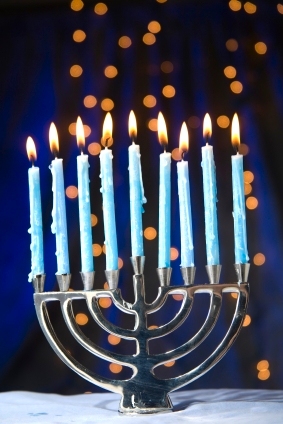 Christmas Traditions »
Christmas Traditions »
The History of Hanukkah
Hanukkah is an eight-day Jewish festival which begins on the 25th day of Kislev according to the Hebrew calendar, usually falling in December on the Gregorian calendar. The holiday commemorates the rededication of the Holy Temple in Jerusalem after its desecration by the Syrians.
While largely free to follow their customs under previous rulers, during the reign of Syrian King Antiochus IV, Jews were increasingly persecuted. Many were enslaved, tens of thousands killed, and in 167 BC the Jewish Holy Temple in Jerusalem was raided by Syrian soldiers. Most of its treasures were stolen or destroyed, and the Temple was defiled with pagan idolatry, including a statue of Zeus. Antioch further forbade the practice of Judaism.
Led by Judah Maccabee, the Jews revolted, winning victory over the Syrians in 165 BC and reclaiming their Temple. The Temple was cleansed and prepared for its rededication. But a search of the Temple produced only a small vial of undefiled oil to light the Ner Tamid, an oil lamp present in Jewish houses of worship. Representing eternal light, once lit, the Ner Tamid should never be extinguished. Despite only having enough oil for one day, the Temple lights miraculously burned for eight days until a new supply of oil was brought.
In remembrance of this miracle, one candle of the Menorah, is lit each of the eight days of Hanukkah. The Menorah is an eight-branched candelabra with a holder for the shammes, a ninth candle which remains lit and is used to light the other eight candles. Hanukkah, which is Hebrew for "dedication", is commonly spelled Hanukah, Chanukah, and Hannukah due to different translations and customs.
The festival of Hanukkah also includes family gatherings, prayers, songs, games and special foods, including some cooked in oil as a reminder of the miracle of the oil in the Temple. The tradition of receiving gifts on each of the eight days of Hanukkah is relatively new and may be due in part to the celebration's proximity to the Christmas season.
© Deborah Whipp







